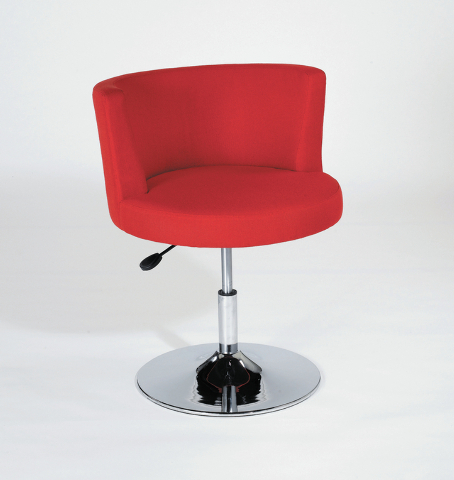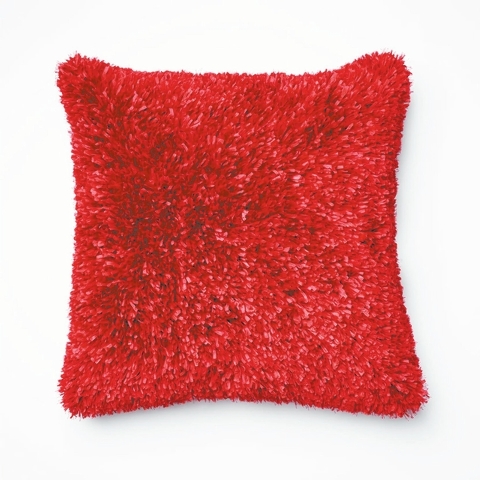Use the color red to evoke variety of emotions
“The purist and most thoughtful minds are those which love colour the most.” — John Ruskin (1819-1900, English art critic of the Victorian era, art patron, water colourist, a prominent social thinker and philanthropist.
I’m seeing red! We’re in the red! I’m red-faced! It’s a red-letter day. I walked the red carpet. We painted the town red.
Few colors have as many meanings and connotations or evoke as many emotions as red. I personally love it and have had as many as four different reds in one house! So let’s see just exactly what it is about red that we love.
Whether you call it scarlet, crimson, vermillion, carmine, maroon, burgundy, ruby, rose, madder, rouge, brick, blood red, blush, fire engine red, cinnabar, russet, rust, Venetian red, flame, Indian red or tomato, red is a very powerful color. It’s both good and evil, love and hate, just to name a few.
According to www.webexhibits.org, red is “supposedly the first color perceived by man. Brain-injured persons suffering from temporary color-blindness start to perceive red before they are able to discern any other colors.”
“Protective powers of the color red against evil influence were common belief. … Red painted amulets or red gems, such as ruby or garnet, were used as charms against the evil eye. Red garlands and red scarves are part of wedding customs in many cultures.”
Today most of us identify with the red rose — long held as a sign of love and fidelity. And red hot can describe anger or love.
Many of us love to wear red (I have friends who wear nothing but), and many more of us love to use red in our homes. The color red is a stimulant and is the hottest of the warm colors.
According to www.about.com, “studies show that red can have a physical effect, increasing the rate of respiration and raising blood pressure. The expression ‘seeing red’ indicates anger and may stem not only from the stimulus of the color but from the natural flush (redness) of the cheeks, a physical reaction to anger, increased blood pressure or physical exertion.”
Although some may shy away from red, it really is not a scary color to have in your home. A red accent wall or other architectural feature, such as an over-mantel or niche, provides a pop of color and doesn’t overwhelm any design scheme. Different colors of red also blend together nicely.
About.com goes on to say that when mixing colors, “cool blues provide contrast and tone down the heat of red. Light pinks and yellows are harmonizing colors that can work well with red if not too close in value such as dark red with a pale or golden yellow. Be careful using purple. It can be an elegant combination but too much could be overpowering. Add a dash of red to a soft but sophisticated pink and gray combo.”
I’m not so sure about some of those combinations, but that’s the beauty of decorating and design. Pick those colors you like, and if it pleases you, then it works. Red in design is not a color that’s limited to sex, age or any other defining characteristic. Almost everybody loves it, and manufacturers don’t disappoint us.
A very popular design element, feng shui, uses red in abundance. About.com tells us that, “Feng shui colors, when used properly, will bring the desired feng shui energy into your environment. Red color carries the energy of fire element in feng shui. Fire has always been a symbol of divine energy and can be both destructive and creative. It represents the energy of sun and life. A balanced feng shui fire element in your home will bring joy, excitement and sexual desire.
“In feng shui color decorating, red always signifies richness and luxury. If used too much, though, it can bring restlessness, burst of anger and overstimulation. Better use it with caution, it is always easier to bring red with details and accessories, rather than with furnishings or wall color.”
Feng shui prefers that red be used sparingly in children’s rooms and freely in the living room, dining room and kitchen. It further suggests that you limit red color (feng shui fire energy) in the following bagua areas of your home: east, southeast (governed by the wood element) home, as well as west and northwest (governed by the metal element.)
Much has been written about red, and it has been a major player in history books for a millennium. It’s difficult to think about all of that history when all you want is a red wall or red throw pillows for your sofa. But more than any other color, red speaks volumes.
When I have the opportunity to assist a client with color choices, red is always at the top of my list. Give it a chance. It’s hot, sexy and easy to be with.
Carolyn Muse Grant is a founder and past president of the Architectural &Decorative Arts Society, as well as an interior design consultant/stylist specializing in home staging. Send questions to creativemuse@cox.net.




















